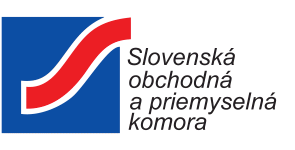Summary:
A British consortium has invented a new lifting concept to transfer trailers between road and rail using the 40’ ISO container lifting dimension and existing container terminal lifting equipment. They are looking for a technical cooperation agreement with partners with a manufacturer to help design a prototype of the tri-axle semi-trailers as well as linking with freight forwarders, shipping companies and terminal operators that use or work with tri-axle semi-trailers
Description:
Freight transport, both domestic and cross border, in Europe is dominated by road transport with a preference by many shippers for the use of tri-axle semi-trailers as the preferred cargo module of choice. Only a very small proportion of the thousands of trailers in circulation in Europe are able to be moved easily and efficiently between road and rail.
Current technologies to transfer trailers between road and rail require incremental terminal lifting equipment to move modified trailers. The transfer time using these technologies is slow, requires additional terminal staff and routinely damages chassis, cargo modules and cargo contents. This concept is aimed at making the un-accompanied trailer transport market for domestic traffic and cross border flows more efficient and effective and to secure positive modal shift.
The use of top lifting to achieve the transfer of the trailers between road and rail is proposed using the 40’ ISO container lifting dimension and existing container terminal lifting equipment. The concept does not require the use of additional terminal equipment investment and allows terminals to handle trailers and containers as a portfolio of service options.
The British concept is proposed as a modification to the design of tri-axle semi-trailers at the time of their manufacture. ISO lifting points are intended to be in place to allow the entire trailer to be lifted quickly, safely and with minimal risk of damage at full service weights. The modification proposed will be designed to minimise any weight penalty and will not reduce the volumetric capacity of the trailers. The top lifting design modifications will not be a major cost item but will give the modified trailer design massively enhanced versatility for owners and operators to exploit.
The trailers will be fully interchangeable between rail and road. They will comply with rail and road transport design, manufacturing and acceptance certification requirements.
The top-lifting trailer technology is aimed initially at the dry van trailer market but could also be used for refrigerated railers, tankers and bulkers. The option to retro fit existing trailers is an added dimension to this initiative to be explored.
This proposal is distinctive in that it is aimed at securing a strategic modal shift to rail by using existing orthodox trailer and terminal lifting equipment technology in an innovative manner. It is commercially focused and aims to use trailers as the versatile and widely used cargo module preferred by many shippers, forwarders and wider cargo interests. It is aimed primarily at satisfying the commercial and operational requirements of the freight and logistics sectors using established technologies
The British consortium are looking for a technical cooperation agreement with partners with european tri-axle semi-trailer design competence for first phase and follow on design development. They will have a small batch/prototype manufacturing capability for new trailer designs.
Type (e.g. company, R&D institution…), field of industry and Role of Partner Sought:
The UK consortium is seeking to establish a technical cooperation agreement with a tri-axle semi-trailer designer/manufacturer (prototype).
They would also like to connect wtih:
• Major forwarder/transport operators in Europe for live commercial trials.
• Terminal operators using ISO lifting equipment widely in European commercial applications
• Key shippers using tri-axle semi-trailers for domestic and cross border traffic
Technical Specification or Expertise Sought:
Potential partners will need to have the following skills and capabilities:
1. European tri-axle semi-trailer design competence for first phase and follow on design development.
2. Demonstrable full knowledge and understanding of road and rail design and engineering certification requirements
3. Small batch/prototype manufacturing capability for new trailer designs
4. Established links to commercial end users able to deploy prototype trailers into full operational service to validate design and engineering aspects and to identify any required modifications
5. Established links to inter-modal terminal operators able to demonstrate and routinely handle top lifting semi-trailers as part of a portfolio of unitised cargo traffic activity
Stage of Development:
Concept stage
Comments Regarding Stage of Development:
The core project is aimed at developing a tri-axle semi-trailer design which would be able to be transferred between road and rail using ISO container type lifting points throughout Europe. Existing inter-modal terminals will be able to exploit the use of their lifting equipment to transfer trailers as well as containers and this will add to their portfolio of capabilities.
The aim is to make the inter-modal transfer of trailers quicker, safer and more cost effective than current lifting systems. The project is also aimed at securing a positive modal shift to rail in line with EU and national aspirations
The project is aimed at identifying the technical and operational feasibility of this concept and will involve trailer engineering and certification and terminal, rail and freight operators in demonstration and validation trials.
The project will also include an assessment of the potential take up rate of the top lifting trailer concept and the economics of this compared to orthodox systems and technology sets.
IPR Status:
Patents granted
External code:
TRUK20211208001








